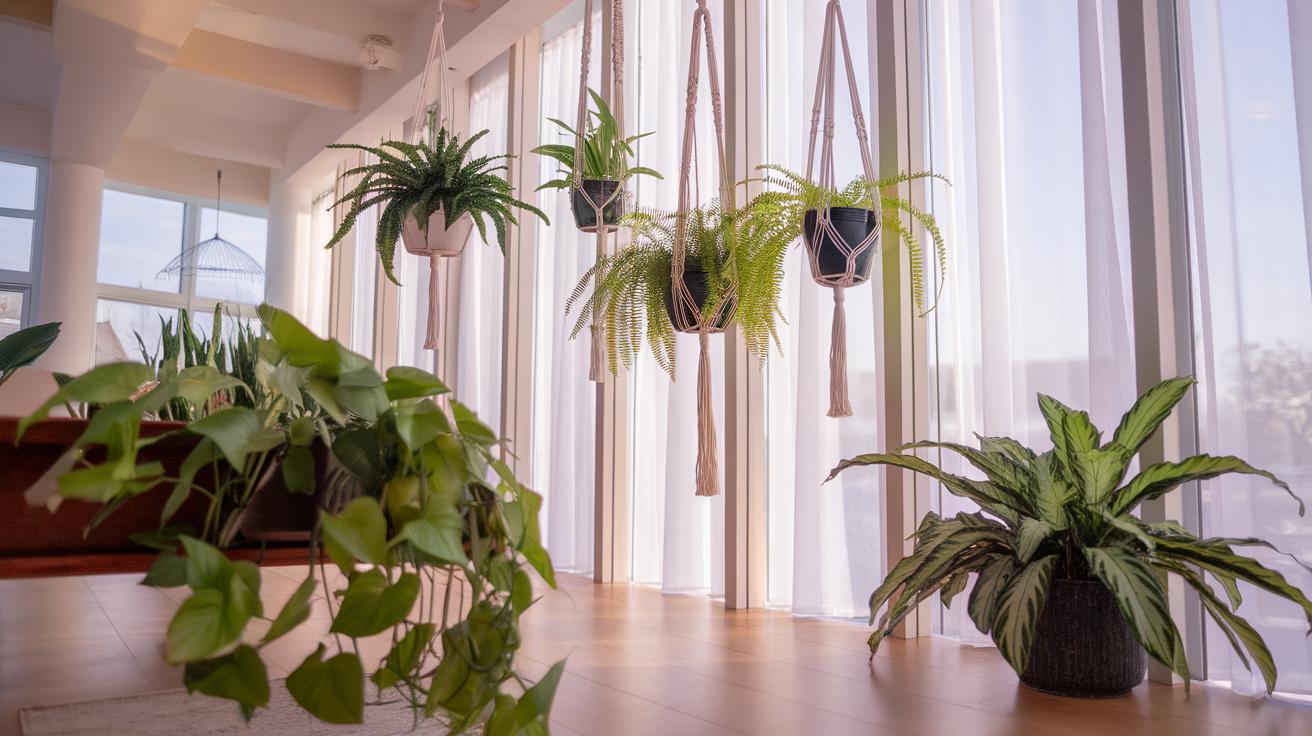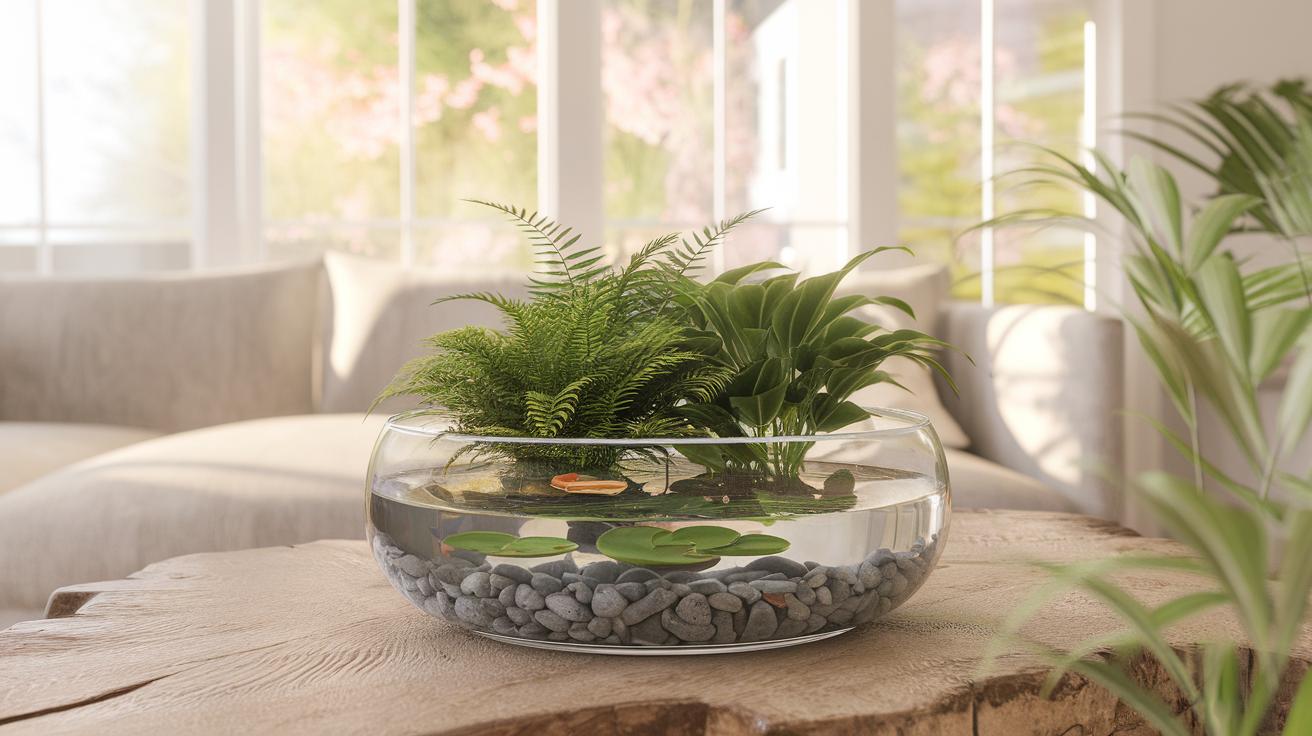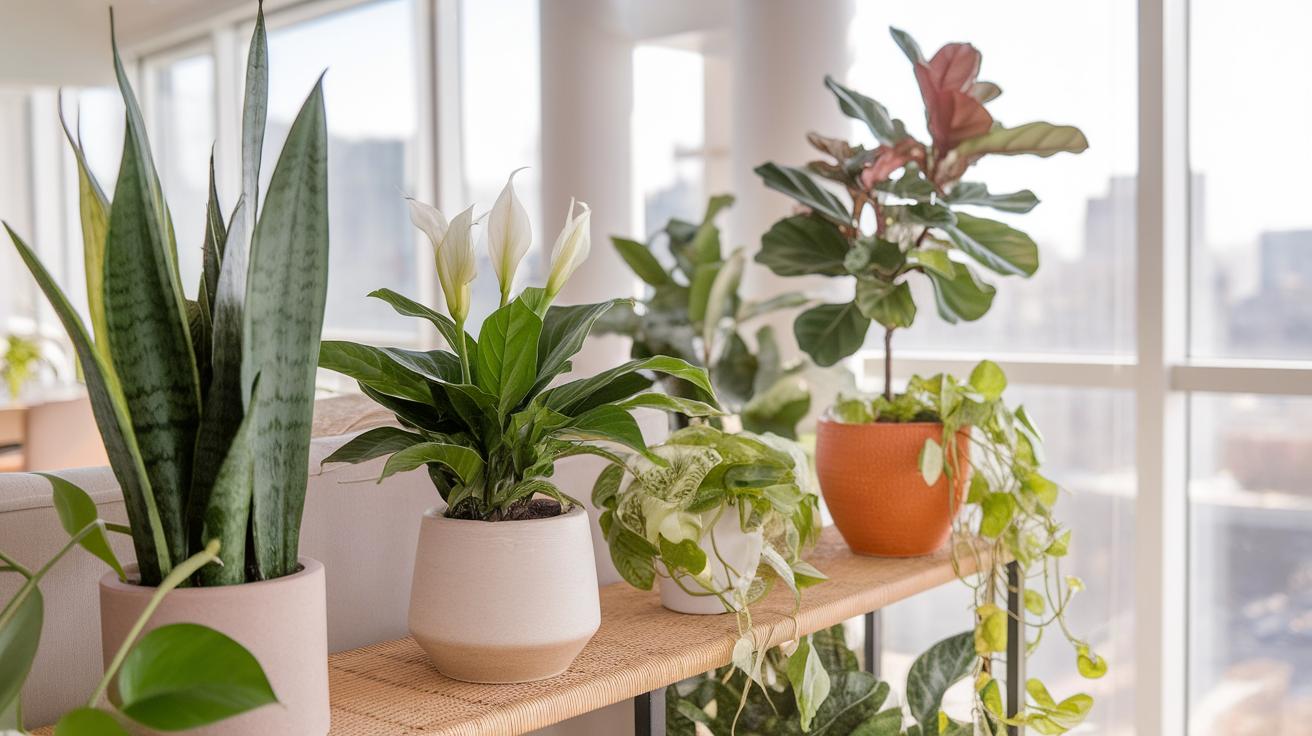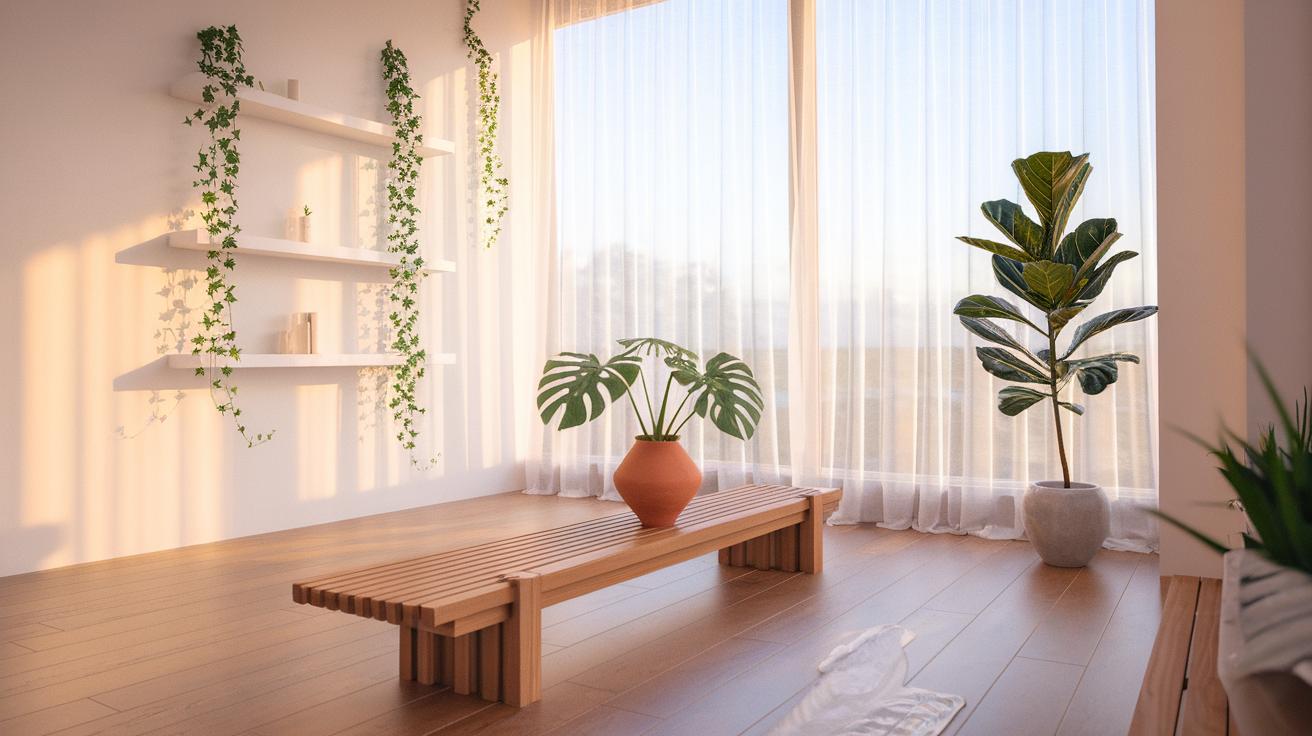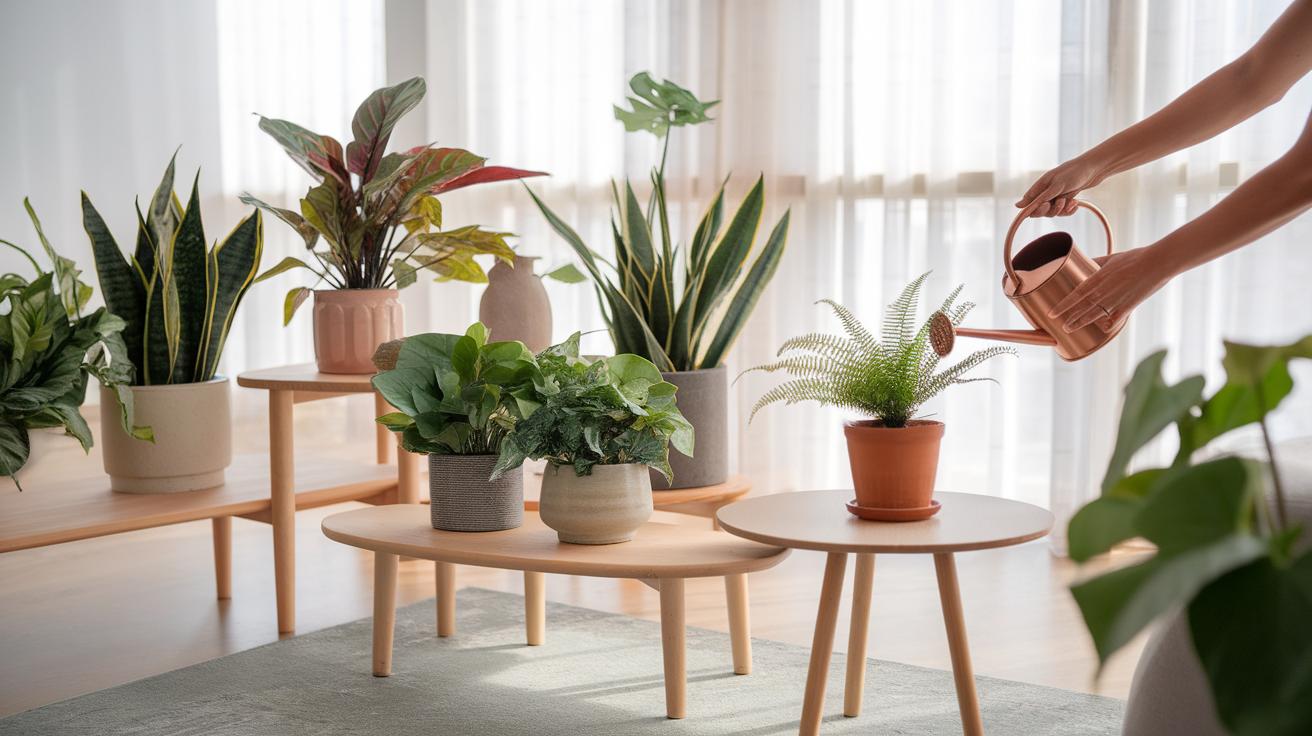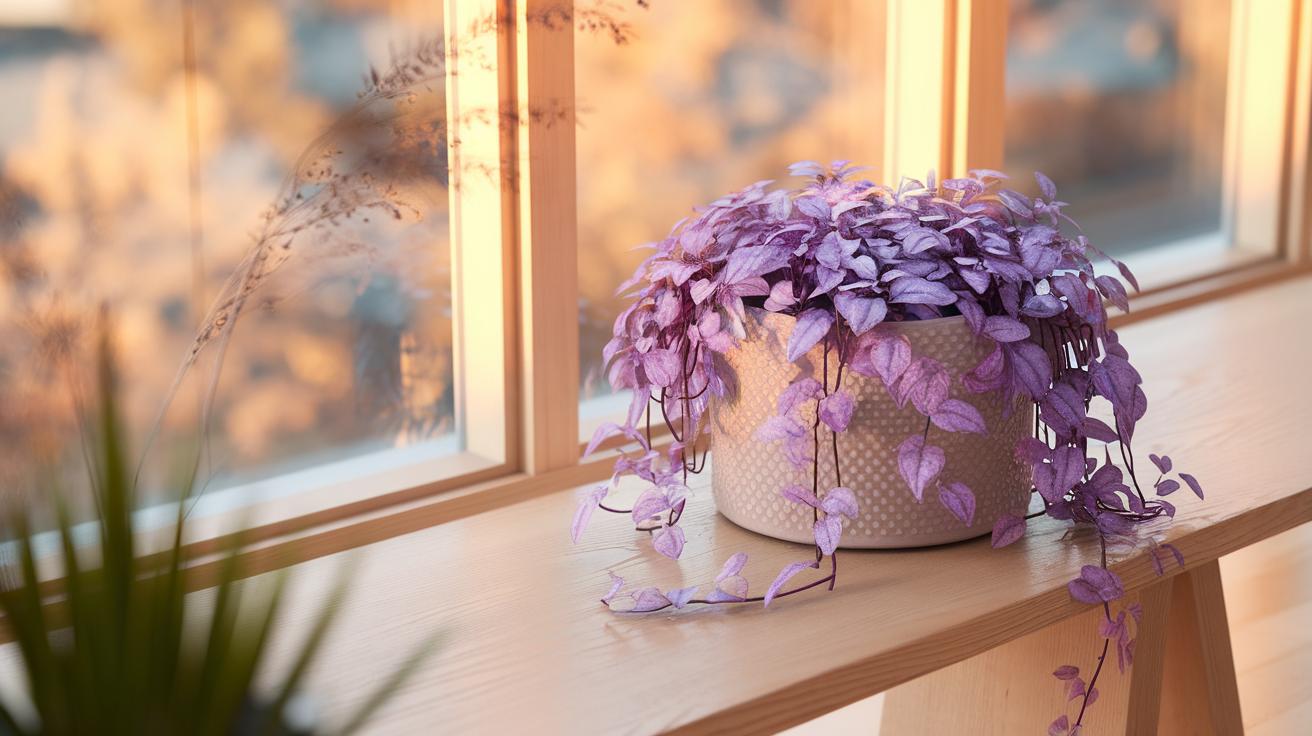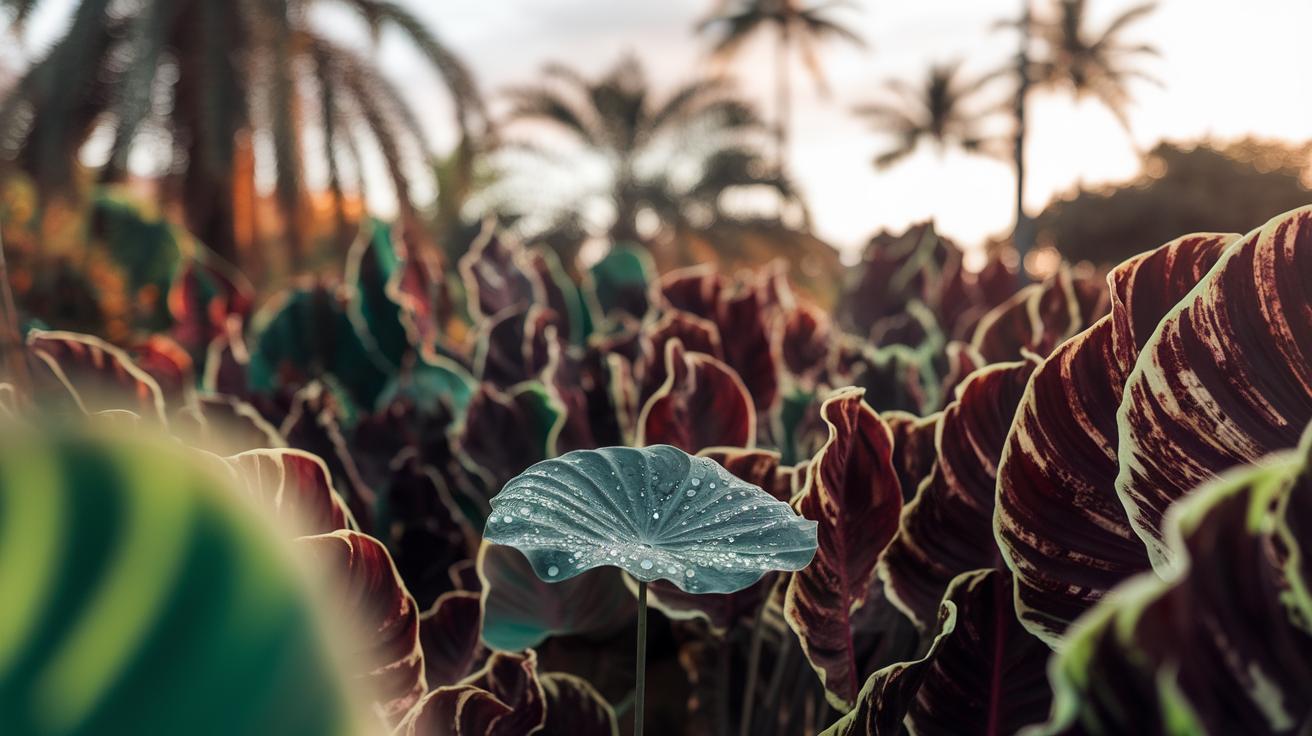Introduction
The money plant, known scientifically as Pilea peperomioides and often called the friendship plant, has gained popularity not only for its visual appeal but also for the positive vibes it brings to indoor settings. Originating from China, this plant features circular, shiny green leaves that can brighten up any room. Its easy care needs make it perfect for both beginners and experienced plant enthusiasts looking to enhance their home environment.
In this article, you will find practical tips and innovative ideas on how to incorporate the money plant into your home decor. Whether you want to place it on a shelf, use it as a room divider, or create a green corner, these ideas will help you use the money plant to improve the look and feel of your space. Exploring these options will give you inspiration to transform your living area with natural beauty.
Understanding the Money Plant
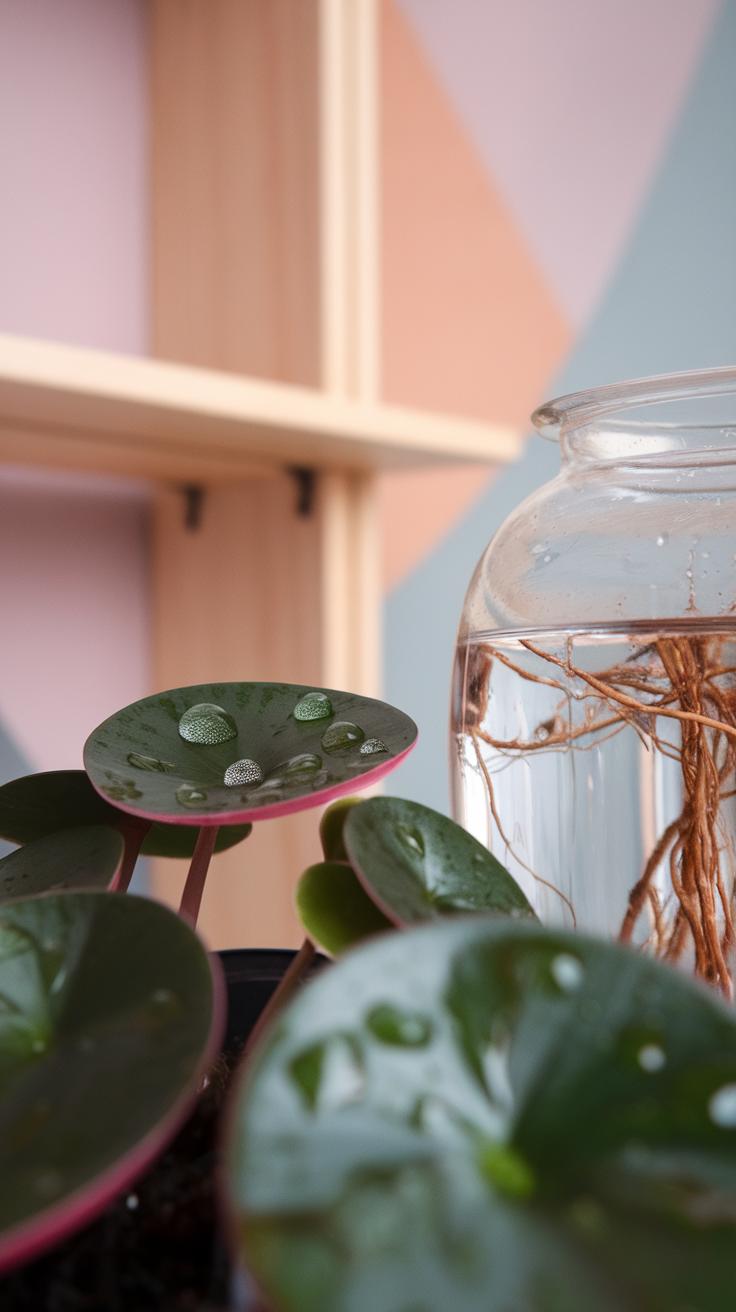
The money plant, scientifically called Pilea peperomioides, stands out with its flat, circular leaves that spread out like little green plates. Its shape makes it instantly recognizable and a favorite among indoor gardeners. People often call it the friendship plant because it is easy to share—the plant produces small offsets that you can pass on to friends and family.
This plant is popular not only for its look but also for how few demands it has. It thrives indoors with little attention, which suits busy lifestyles. You don’t have to worry much about watering or complicated care routines to keep it alive and healthy. With moderate light and occasional watering, the money plant can flourish on a windowsill or shelf.
Does your space need a splash of green that adds style and feels alive? The money plant fits the bill perfectly. Its simplicity allows you to get creative with your décor, blending nature and design easily in your home.
Where the Money Plant Comes From
The money plant originates from the southern provinces of China, particularly Yunnan and Sichuan. In its natural environment, it grows in mountain forests with plenty of shade and moderate humidity. These regions have a mild climate that helps the plant maintain its evergreen leaves throughout the year.
Adapting well to indoor spaces worldwide, the money plant thrives as a perennial. It continues growing year after year without losing its vibrant leaves. Its evergreen nature means you get consistent greenery inside your home, no matter the season.
Does knowing its origin help you think of how to create a cozy spot for it indoors? Bringing a piece of its natural habitat into your living space can keep your money plant thriving and looking fresh.
Basic Care Tips for Healthy Growth
Keeping your money plant healthy is straightforward. It prefers temperatures between 60 and 75 degrees Fahrenheit. Avoid placing it near drafts or heating vents that could cause damage. Bright, indirect light is ideal. Too much direct sunlight can burn the leaves, while too little light slows growth.
Water the plant once the top inch of soil feels dry. Overwatering can cause root rot, so allow it to dry slightly between watering sessions. Pilea peperomioides also reproduces easily through small baby plants that grow around the base. You can separate these pups and repot them to grow new plants.
By following these simple steps, you keep the plant vibrant and ready to enhance your home décor. Think about whether your indoor environment meets these needs to enjoy a flourishing money plant with minimal effort.
Choosing the Right Spot for Your Money Plant
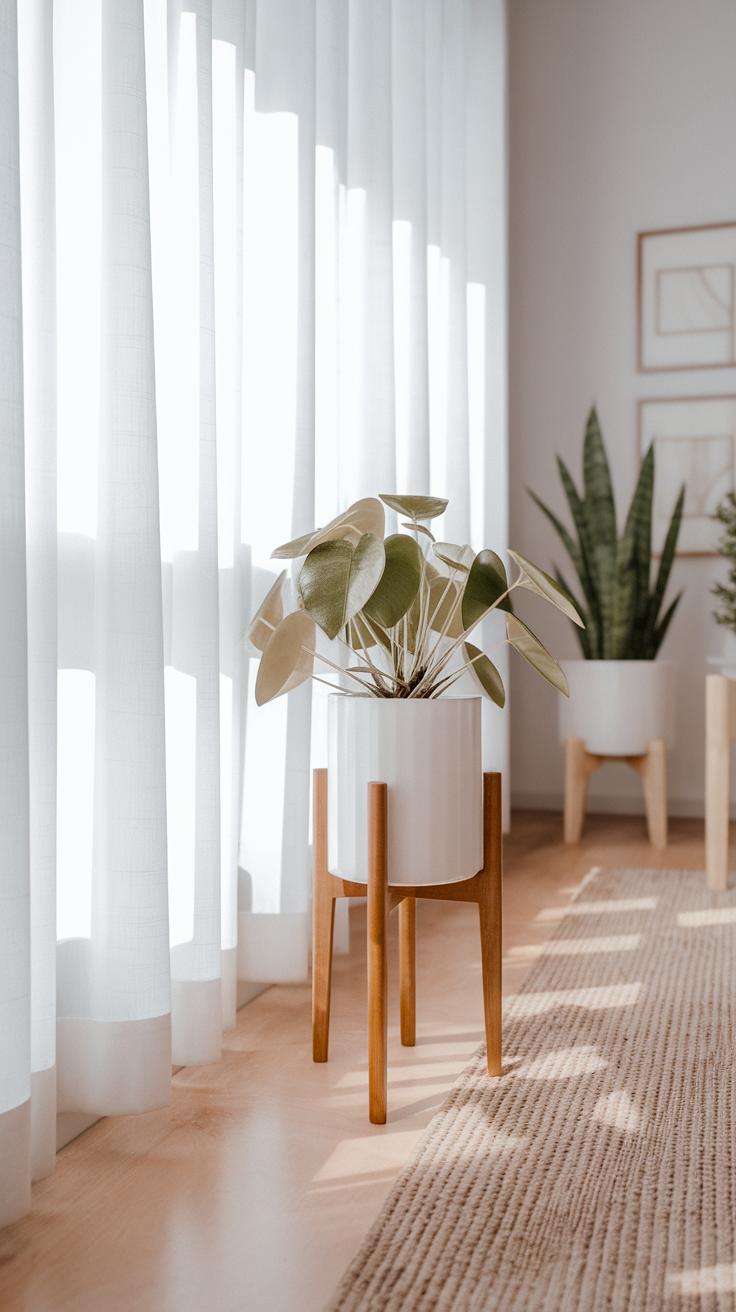
Your money plant needs a spot where it can grow well and add style to your home. Finding the perfect place means thinking about more than just looks. The plant needs space with enough air and the right kind of light to stay healthy. Natural light plays a key role in keeping the leaves bright and fresh.
Direct sunlight can burn the leaves, while too little light makes them pale and slow-growing. You might try placing your money plant near a window that gets filtered light through a curtain. This way, your plant will stay lively and also brighten up the room.
Think about the rooms where you spend the most time. Would the plant feel better by your desk, on a shelf in the living area, or near the kitchen window? Trying these spots helps you find the best place that matches your home’s style and lets your money plant thrive.
Light and Temperature Considerations
Money plants need bright but indirect sunlight to stay healthy. Too much direct sun can scorch their leaves, while too little light leads to weak growth and dull leaves. Aim for a spot where the plant receives filtered light for about 4 to 6 hours daily.
Temperature affects the plant’s well-being, too. It thrives in temperatures between 65°F and 80°F. Avoid placing it near cold drafts, heaters, or air conditioners, as sudden changes can stress the plant.
If natural light is limited, you can use artificial lights like LED grow lights. Place the plant within a few feet of the light source for about 12 to 14 hours a day. How can you balance light and warmth in your space to keep your money plant healthy?
Best Rooms and Placement Ideas
Certain rooms work best for your money plant, especially those with good natural light and moderate temperature. Living rooms with large windows let your plant catch gentle light while adding freshness to your seating area.
Kitchens benefit from the plant’s green touch and often have windows that provide the right indirect light. Placing the plant on a shelf, countertop, or windowsill can improve the decor and air quality.
Offices are excellent places for money plants, adding calm and nature to your working environment. Set it on your desk or hang it from a planter near a window. Trying different spots helps you see where the plant looks best and fits your space well. Could your work area use a green boost?
Decor Ideas Using Money Plants in Pots
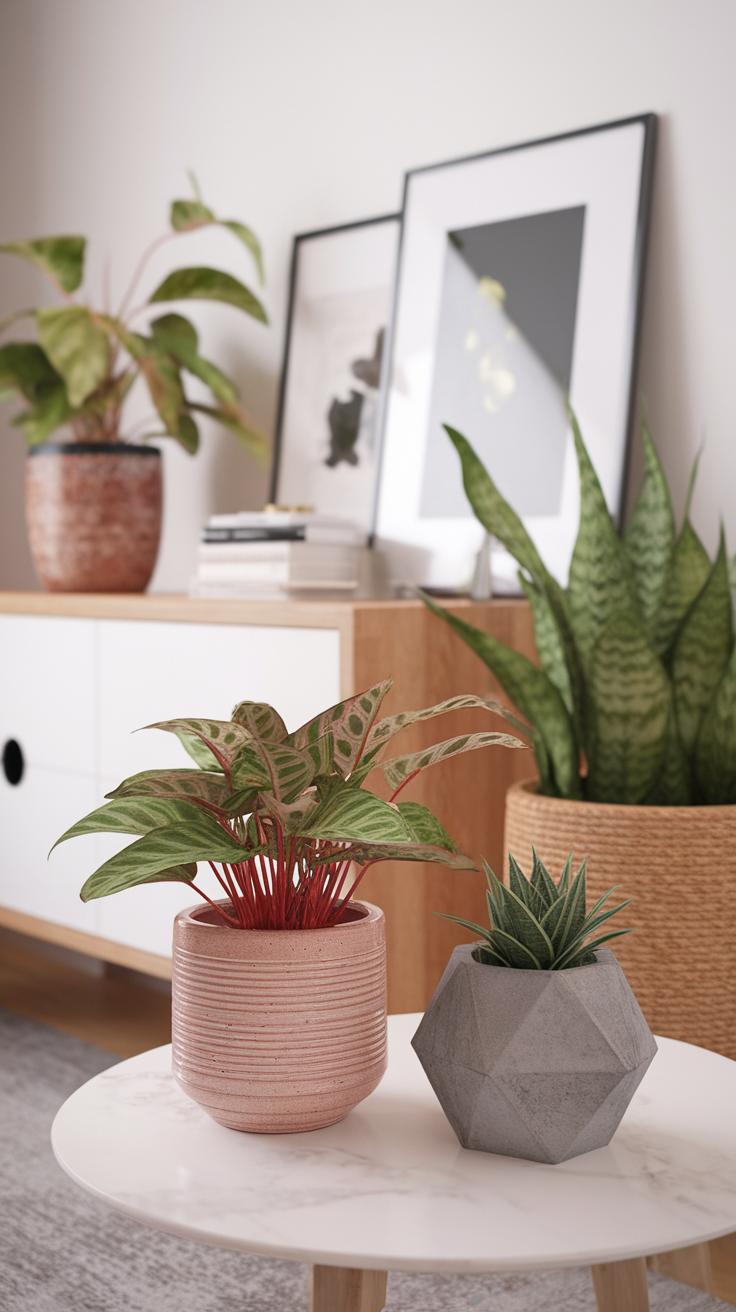
Choosing the right pots can highlight your money plant’s bright green leaves. Pots made of ceramic, terracotta, glass, or metal each bring unique textures and colors to your decor. Ceramic pots with smooth finishes suit modern rooms, while rough terracotta adds warmth to rustic or traditional spaces.
Think about the shapes too. Rounded pots give a soft, inviting look, while square or geometric pots offer a clean, structured feel. Lighter-colored pots can make the leaves pop, especially against darker walls. Dark pots, on the other hand, add depth and pair well with bright interiors.
You can place a single money plant in a large pot as a statement piece or use smaller pots to create clusters. Matching the pot’s style with your home’s design helps the plant blend in or stand out as needed. What pot style will best complement your living room or workspace?
Selecting Pots That Match Your Style
When picking a pot, consider how its material and color fit your home’s look. Ceramic pots come in many colors and often have a smooth texture. They suit minimalist and contemporary interiors well. Terracotta pots have a natural, earthy feel with a rougher surface that works for traditional or boho styles.
Glass pots offer a modern touch and let you see the soil and roots, but need careful watering to avoid damage. Metal pots, like copper or brass, add shine and a bit of luxury, but can become hot in direct sunlight, affecting the plant.
Choose pot colors that highlight the plant’s lush leaves. For example, a bright white pot contrasts with dark green leaves, while muted earth tones provide a calming backdrop. Select a pot that matches the room’s mood and makes your money plant look healthy and lively.
Creating Attractive Plant Groupings
Grouping several money plants together or mixing them with other houseplants creates a rich, layered display. Combine tall and short plants to balance height and avoid crowding. Vary leaf shapes and shades of green to add interest without overwhelming the space.
Try placing three small money plants in pots of different sizes near a window or on a shelf. Mix in plants like spider plants or ferns for texture contrast. Keep groupings tight enough to feel connected but spaced so each plant can breathe.
Think about how the light hits the group and arrange it so every plant gets some sunlight. Groupings draw attention and create a natural focal point. How could you arrange your plants to bring more life into your favorite room?
Incorporating Hanging Money Plant Displays
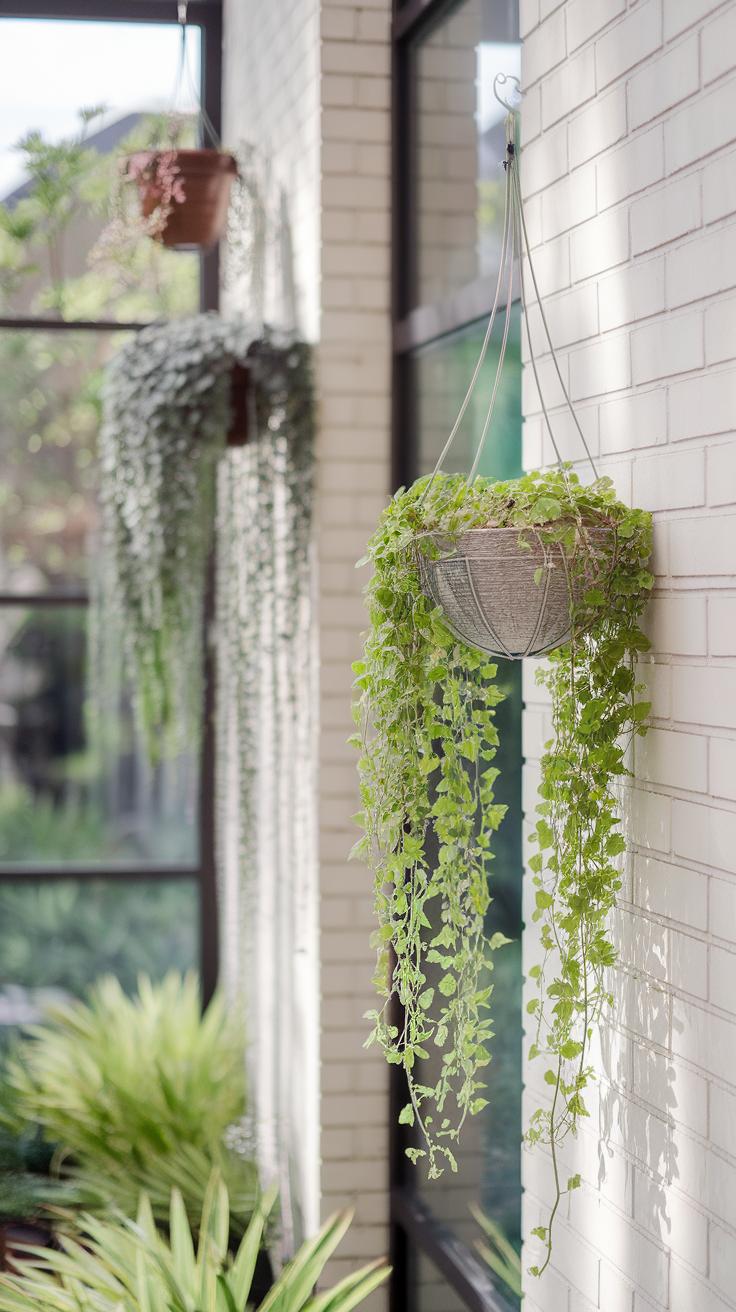
Hanging money plants create dynamic layers in your home’s design. Using hanging pots or holders adds depth by drawing the eye upward, away from typical tabletop or floor arrangements. You can pick styles that suit your room’s character—round ceramic pots, glass terrariums, or even rustic wooden holders work well.
Different materials like clay, metal, or woven baskets bring texture and contrast. Consider how the trailing vines spill over edges, softening corners or brightening empty vertical space. Hanging displays also free up floor and shelf space, making smaller rooms feel more open without losing the lush green presence of your money plant.
Would you try combining multiple hangers at different heights to create a layered look? This technique adds interest and a natural flow that can transform dull walls into living art. Hanging money plants give you flexibility in decorating while keeping your space fresh and vibrant.
Choosing the Right Hanging Accessories
Macramé hangers offer a handmade, bohemian feel while supporting lighter pots securely. They work best with medium-sized money plants and need sturdy knots to hold the weight. Metal brackets or rings provide more strength and reliability for larger pots or heavier soil.
Hooks come in various sizes and designs — choose ones rated for the pot’s weight, including soil and water. Anchor them properly into beams or studs to prevent accidents. You want your money plant visible and thriving, not at risk of falling.
What balance do you want between style and stability? Handmade macramé suits casual looks, while metal hooks fit modern or minimalist rooms. Always factor in the combined weight and check if your ceiling or wall can handle the load. This care ensures your hanging display looks great and stays safe.
Placement Ideas for Hanging Plants
Near windows, hanging money plants soak up natural light, helping their leaves grow bright and full. Corners often go unused but can brighten with a trailing green cascade. Entryways offer a warm welcome and catch the eye without taking up floor space.
Try grouping two or three hangers at varying heights to create a focused green corner. This setup maintains visibility while adding vertical interest. You might also hang them near open shelves or above desks, making plants a natural part of your room’s daily experience.
Where in your home could a hanging money plant add freshness without crowding? Experiment with heights and positions to find the perfect balance between function and style. Hanging plants bring life to silent corners and busy spaces alike.
Using Money Plants as Natural Room Dividers
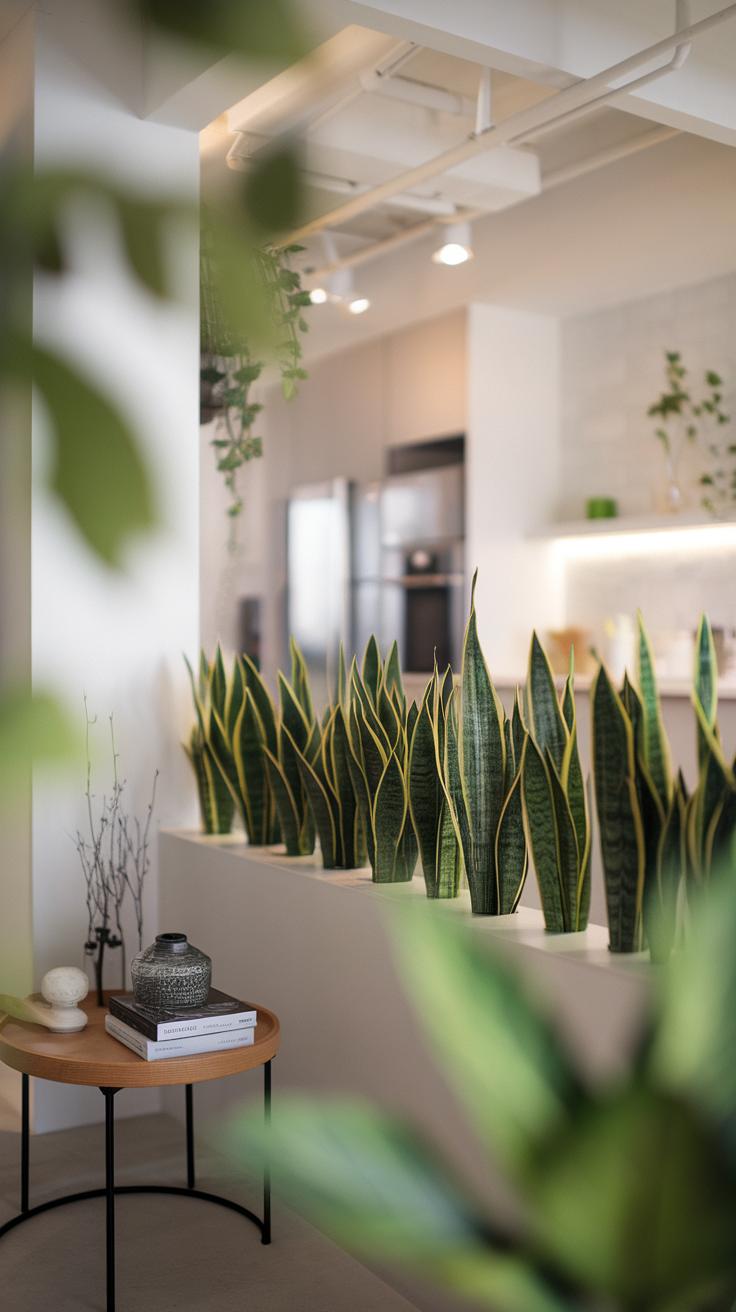
Money plants offer a smart way to create natural partitions in open floor plans. You can arrange several pots in a line or cluster them on shelves to form a green barrier between areas. This method gives you privacy without making the space feel closed off. The leaves filter light and add a fresh touch, keeping the atmosphere open and lively. Using money plants as dividers helps break up large rooms into cozy zones for different activities. Imagine placing them between your living room and dining area to separate the spaces gently yet clearly. How could a natural screen change the flow of your home? This approach also invites more greenery indoors, making your environment healthier and more pleasant.
Creating Green Screens with Plant Shelves
Multi-tiered plant shelves provide a practical way to build a money plant screen. Place money plants on different levels to fill the vertical space evenly. Leave some gaps for air and light to pass through, avoiding a closed wall effect. Choose shelves with adjustable height to arrange pots at eye level or lower, depending on nearby activities. You can combine trailing money plants with upright potted ones to add texture and depth. This setup works well to separate a reading nook from a lounge or to define a hallway corner. Thinking about your room’s layout, how could a shelf with plants replace a traditional divider in your home?
Combining with Other Plants for Varied Textures
Pairing money plants with taller or bushier plants adds diversity to natural room dividers. Use plants like snake plants or ferns, which contrast in shape and height with the softer trailing vines of money plants. This mix creates a more interesting visual barrier, offering both openness and privacy. The varied textures help keep the division from feeling too heavy or flat. Place bushy plants behind or alongside money plants for layered depth. This combination offers natural airflow and light, while clearly marking boundaries between spaces. What plant varieties do you already have that could boost your green divider’s effect?
Brightening Workspaces and Study Areas

Placing a money plant on your desk or shelf can improve your mood and focus while you work or study. Seeing fresh green leaves nearby creates a calm feeling, helping reduce distractions. The plant’s gentle growth reminds you to take breaks and breathe. This can lead to better concentration and less stress during long hours at the desk.
Choose a spot with indirect sunlight, like near a window or under soft room lighting. Water the money plant once a week, making sure not to overwater. Use small pots that fit well on your desk and keep your workspace tidy. A healthy money plant refreshes the air and adds life to your environment, making your study or work time more pleasant.
Benefits of Plants in Work Environments
Indoor plants like the money plant improve air quality by filtering toxins, which helps you breathe easier during work or study sessions. This cleaner air can boost your alertness and reduce headaches. Studies show that having plants around lowers stress levels and increases overall happiness. When your brain feels less overwhelmed, you perform better on tasks and remember information more clearly.
Can you imagine how much a small plant could change your daily routine? Bringing natural elements into your workspace connects you to something living, which may help you feel more grounded. Even a simple leaf has the power to improve your mental clarity and patience.
Practical Decor and Maintenance Tips
Select pots that match the style of your desk but keep size in mind to avoid clutter. Tiny ceramic or glass pots look neat and don’t take up too much space. Position the money plant where it can receive filtered light without blocking your tools or documents. Avoid crowded corners to let the plant grow freely.
Water the plant once every seven days, using just enough to keep the soil moist but not soaked. When busy, set a reminder on your phone to avoid forgetting. Wiping the leaves occasionally removes dust and helps the plant absorb more light. This simple care keeps your money plant healthy and your workspace fresh without extra effort.
Creative Ways to Display Money Plants in Bathrooms
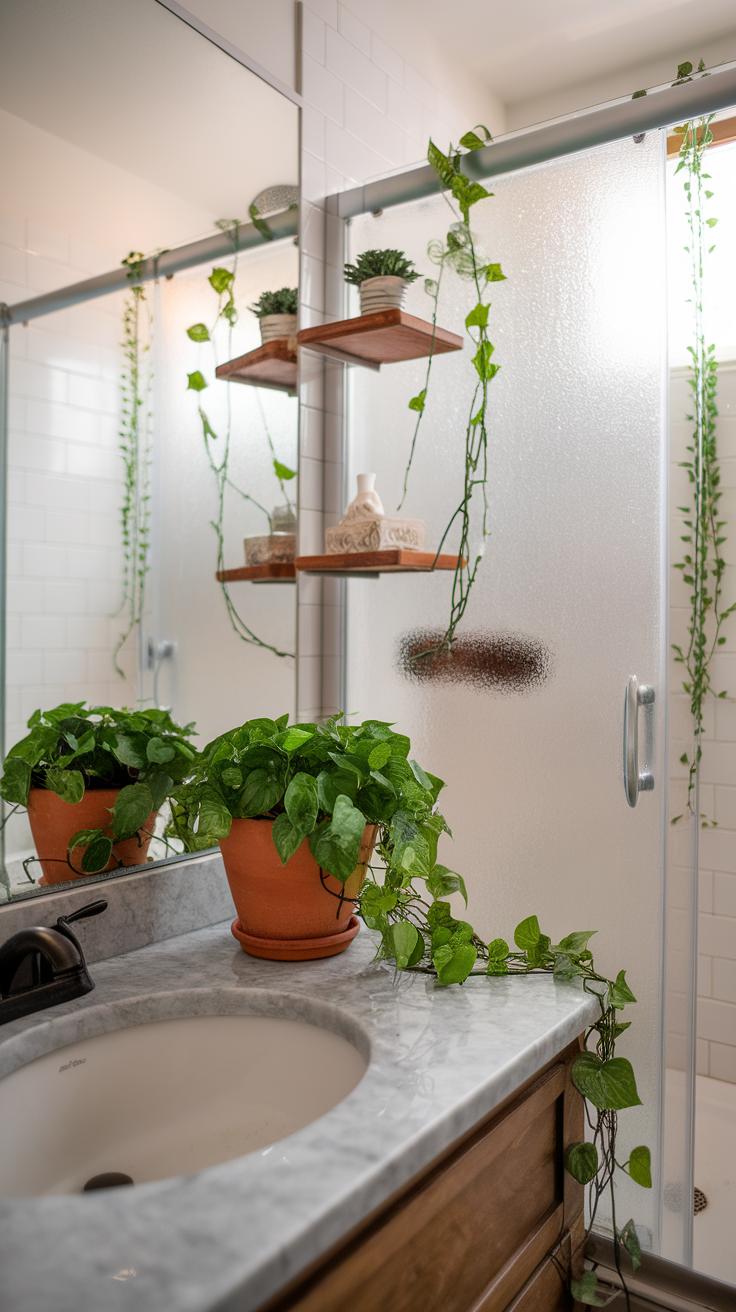
Bathrooms offer a natural advantage for money plants because of their high humidity. The moisture helps these plants grow healthy leaves and reduces the need for frequent watering. Placing money plants in bathrooms can instantly make the space feel fresher and less dull, thanks to their bright green leaves.
To make your bathroom stylish, try hanging a money plant in a decorative macramé holder near the shower area. You can also place small pots on shelves or window sills where light reaches them. Using containers with drainage holes helps avoid water buildup and root rot.
Think about using glass terrariums or ceramic pots with waterproof trays. These choices keep your bathroom tidy and complement its design. Could your bathroom’s corners or edges use a pop of green? Money plants fit perfectly, proving these spaces don’t have to be overlooked in your home decor.
Humidity and Lighting Needs in Bathrooms
Money plants do well in humid environments because moisture in the air supports their growth. Bathrooms with windows or skylights provide enough indirect light, which money plants prefer. Avoid placing them where they receive direct sunlight, as it can burn their leaves.
If your bathroom lacks natural light, consider using LED grow lights for a few hours a day. Water the plants less frequently since humidity keeps the soil moist longer. Checking the soil’s dryness before watering helps you avoid overwatering. Would your bathroom’s lighting support this plant’s needs, or could small light adjustments help?
Decor Styles and Container Ideas
Money plants adapt well to various bathroom decor styles. For a modern feel, use sleek white or black ceramic pots with clean lines. Rustic bathrooms benefit from terracotta or wooden containers that bring warmth and character.
Minimalistic styles call for simple glass jars or clear acrylic pots to keep the look light and airy. Choose waterproof containers that can handle splashes and humidity without damage. Placing your money plant on metal or stone stands can improve drainage and prevent surface water damage.
Which container style matches your bathroom’s vibe? Picking the right pot can make your money plant the highlight of your bathroom’s design while keeping it healthy.
Seasonal Care and Decor Adjustments
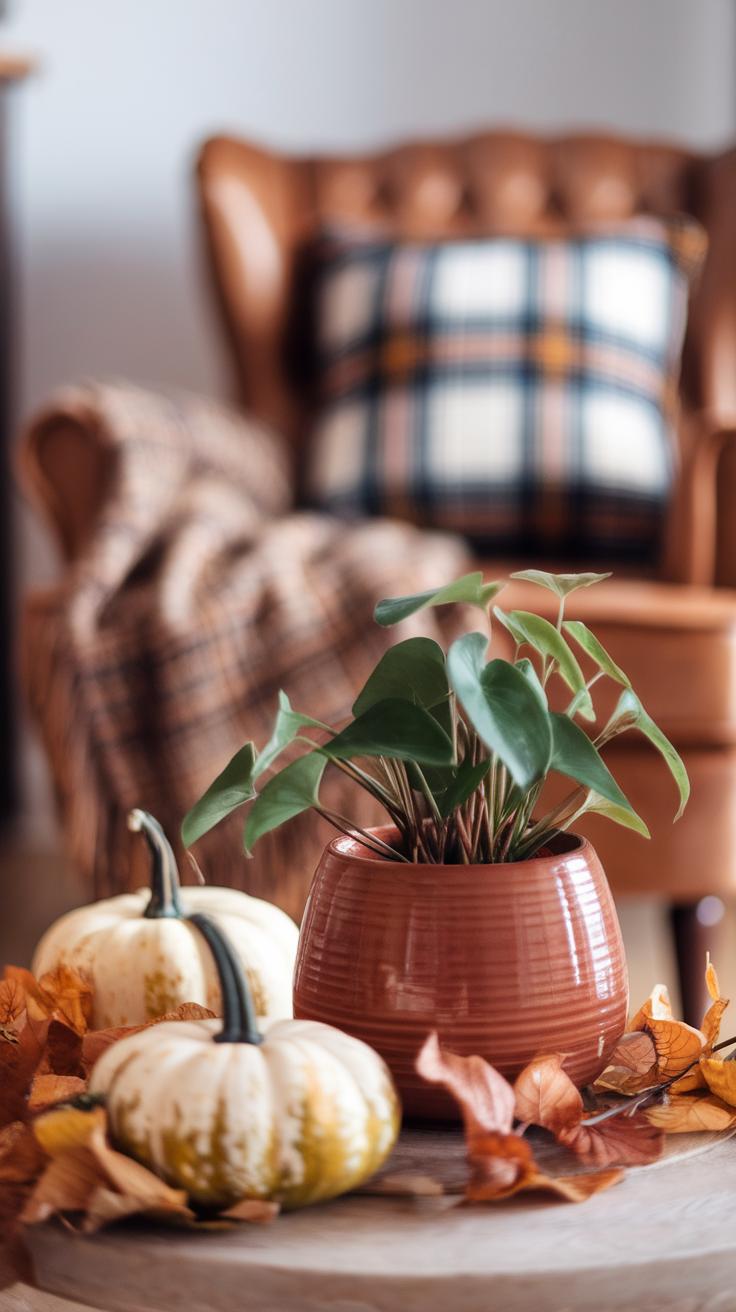
Changing seasons affect your money plant’s needs and how it looks in your home. As temperatures fluctuate, the plant’s growth slows down in colder months and speeds up in warmer ones. You may want to move your money plant closer to a bright window in winter to ensure it gets enough light. During summer, placing it where it receives indirect light can prevent leaf scorch.
Watering should change with the season. In spring and summer, your money plant will need more water to support growth. However, reduce watering in fall and winter to avoid root rot, since growth slows down. Check the soil moisture regularly to decide when to water.
Refreshing the décor around your money plant can keep your space lively throughout the year. Think about swapping out pots, decorative stones, or tablecloths to match each season’s mood. Would you try autumn tones like rust and gold or bright spring pastels to give the plant a fresh look?
Adjusting Light and Water Through the Year
Your money plant’s water and light needs shift with the seasons. During spring and summer, aim to water once a week or when the top inch of soil feels dry. In fall and winter, water less often—every two to three weeks may be enough. Overwatering in colder months can harm the plant’s roots.
Light is another key factor. The plant thrives near indirect sunlight. In winter, place it closer to a window facing south or east to catch more daylight. When the sun’s stronger in summer, move the plant a few feet back to prevent leaf burns.
Have you noticed how your money plant’s leaves respond to these changes? Adjusting care with the seasons keeps it healthy and vibrant all year long.
Updating Your Decor Tips for Seasonal Themes
Seasonal decor around your money plant adds charm to your living space. In spring, use light-colored pots with floral or pastel accents to highlight new growth. Summer allows bold, bright accessories like turquoise or coral planters to make the green pop.
Fall calls for warm tones such as copper or burnt orange pots. Pair these with natural elements like pinecones or dried leaves near the plant for a cozy vibe. For winter, try white or silver containers and add small fairy lights for a festive touch without overwhelming the plant.
Consider how simple swaps can change your room’s mood. What seasonal colors inspire you to refresh your money plant’s corner every few months?
Troubleshooting Common Money Plant Problems
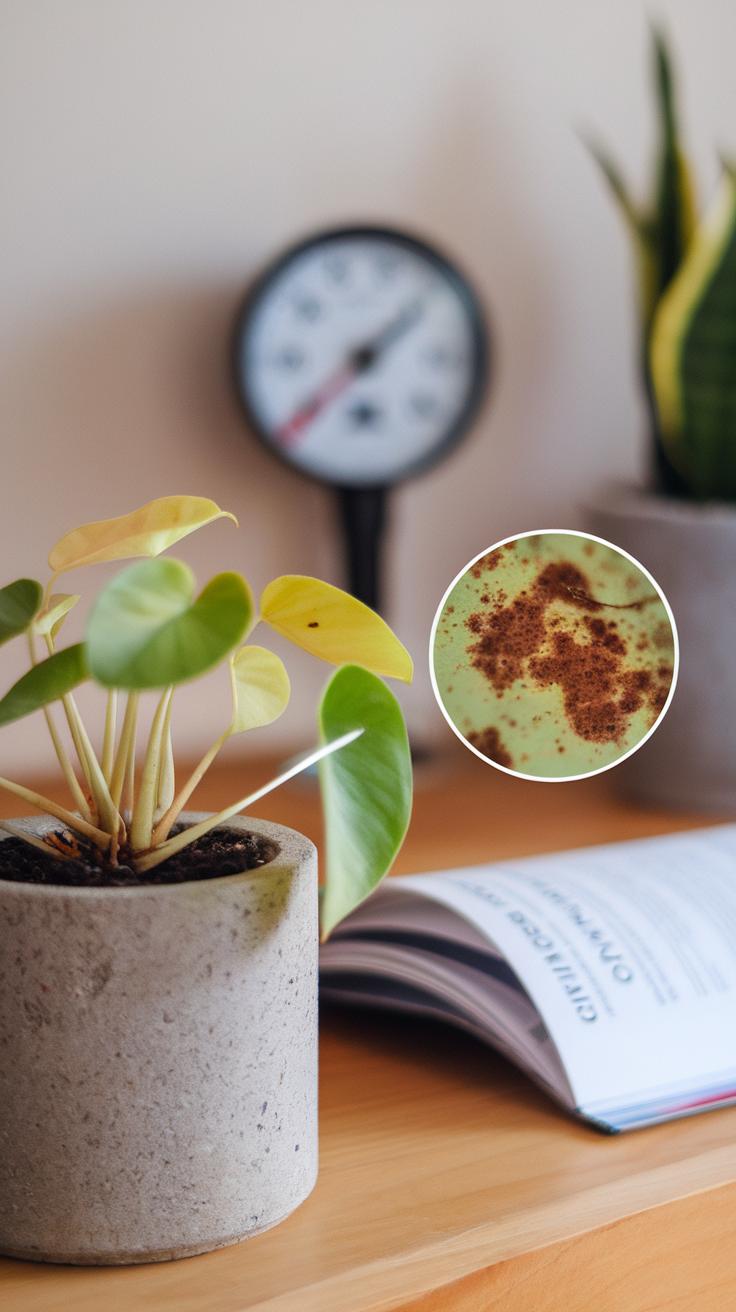
Identifying Early Signs of Trouble
Look closely at your money plant’s leaves and stems every few days. Leaves that droop, turn yellow, or develop brown spots usually signal a problem. If you notice leaves dropping often, your plant may be stressed. Check the stems for soft or blackened areas, which might mean rot. Pay attention to leaf color changes. Pale leaves can mean too little light, while dark, wilted leaves may show overwatering.
Are the leaves curling or developing holes? This could point to pest activity. Early recognition helps you act fast before your money plant weakens. Keep an eye on the soil too. If it feels soggy or smells bad, it’s likely holding too much water. These patterns tell you when something’s off. Catching problems early prevents long-term damage and keeps your plant healthy.
Simple Solutions to Common Issues
If you spot yellowing leaves, try moving your money plant closer to a window that receives bright, indirect light. Avoid direct sun, which burns the leaves. Overwatering often causes root problems. Let the top inch of soil dry out before watering again. Use a pot with drainage holes to stop water buildup.
For pests like spider mites or aphids, wipe the leaves with a cloth dipped in mild soapy water. You can also spray neem oil once a week to keep insects away naturally. If leaves drop, trim off the dead parts and check the room’s humidity—money plants like moderate moisture in the air.
Small changes in care can revive struggling plants. Adjust watering schedules, shift the plant’s spot, and remove pests by hand. These steps restore your money plant’s growth and beauty, helping you maintain a fresh green touch in your home.
Personalizing Your Money Plant Decor

Adding a personal touch to your money plant display makes your space feel truly yours. You can customize pots with your own style or arrange plants to fit your room’s theme. What memories or interests could you weave into your plant setup?
Try grouping money plants with keepsakes or photos that mean something to you. For example, a small shelf showing your plant alongside travel souvenirs creates a storytelling nook. You can even mix different sizes and pot shapes to reflect your personality.
What if your money plant sat inside a handmade macrame hanger? This adds texture and warms up the space. Small details, like colorful stones around the base or matching plant accessories, invite you to interact with your decor daily.
How do you want your plants to express who you are? Crafting your display is easy and turns every glance at your money plant into a moment of personal connection.
DIY Pot and Holder Customization
Painting your plant pot transforms a simple container into one that matches your style. Use acrylic paint to create patterns, shapes, or even your favorite colors. Try stripes, dots, or abstract designs that catch your eye.
Adding decorative stones or beads around the rim can give a polished look without much effort. A thin rope tied around the pot changes its whole vibe to rustic or nautical, depending on the material.
You might also consider fabric planter covers. Using old scarves or burlap cloth is a great way to add softness and color. These covers are easy to swap out when you want a fresh look.
Why stick to plain pots when a little creativity can make your money plant a piece of art? Simple DIY touches help your plant fit perfectly into your home’s existing style.
Combining Plants with Art and Accessories
Pairing your money plant with wall art adds depth to any room. If you have botanical prints or abstract paintings, position the plant nearby to create a link between nature and creativity. This brings life to the walls and corners equally.
Bookshelves are perfect spots to place money plants among stacked books. The green leaves contrast nicely with pages and can soften the look of hard edges. Pick books you love to make the arrangement feel meaningful.
Vintage accessories like old cameras, clocks, or pottery paired with your money plant highlight a sense of history. These objects add character while the plant keeps the space fresh and alive. How does mixing old and new items change your room’s mood?
Bringing together plants and personal artifacts builds a unique atmosphere only you can create. This mix makes your home more than just a living space—it becomes an expression of your tastes and memories.
Conclusions
Using the money plant in your home offers multiple benefits beyond decoration. It adds a fresh touch of nature and contributes to a calming atmosphere. The plant’s simple upkeep lets you enjoy its presence without much hassle. Choosing the right spot and pot can significantly affect the impact of the money plant in your rooms, making your home more inviting and lively.
Try arranging your money plant in various settings to find what suits your style best. You may also combine it with other plants or decor elements for a personalized touch. As you experiment, consider the plant’s needs and your space’s lighting to ensure it thrives. Your home aesthetic can gain a new level of charm and comfort by integrating this versatile green companion.



